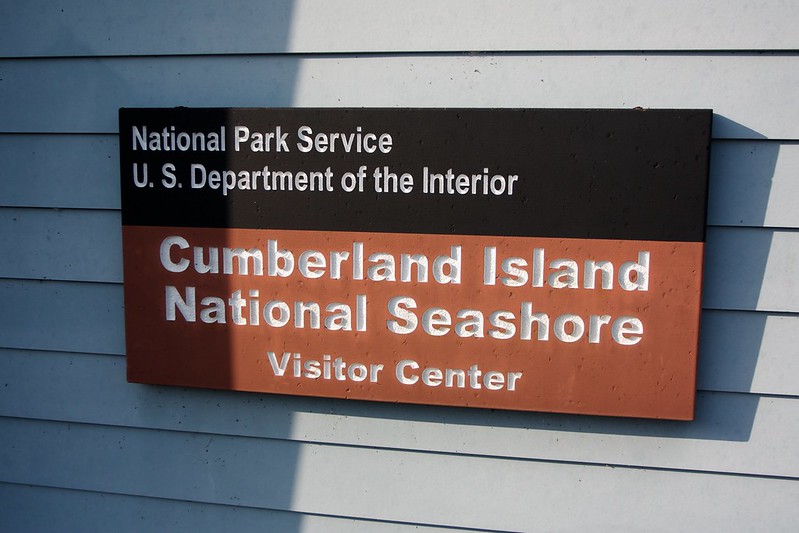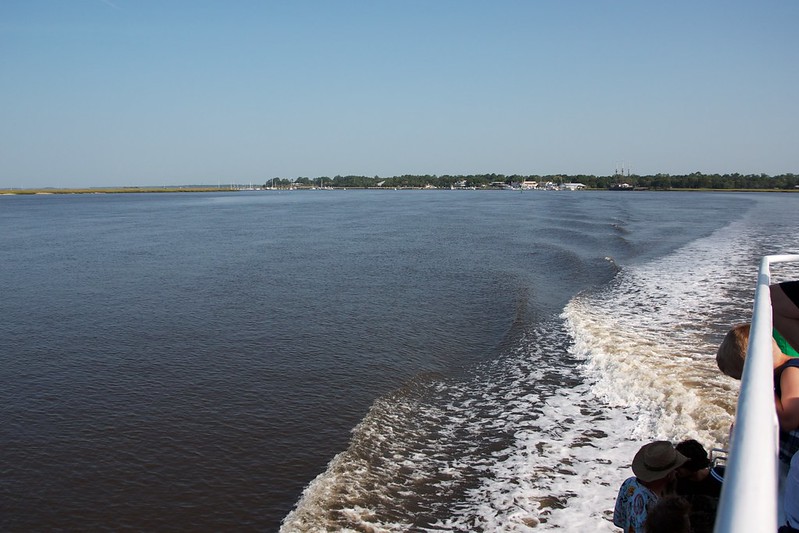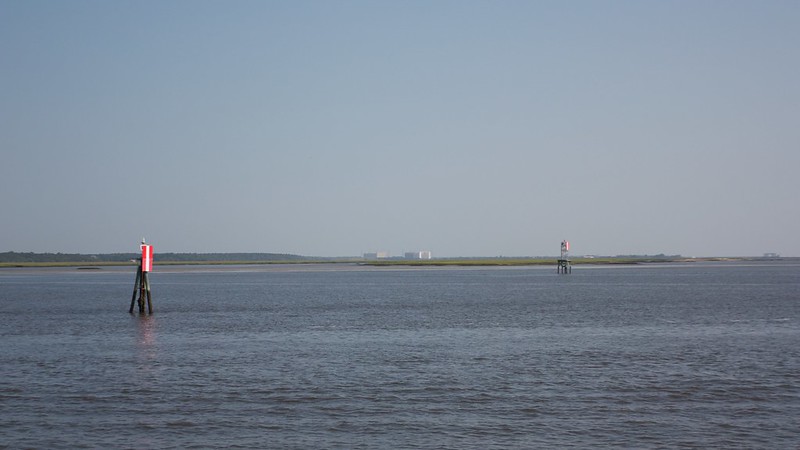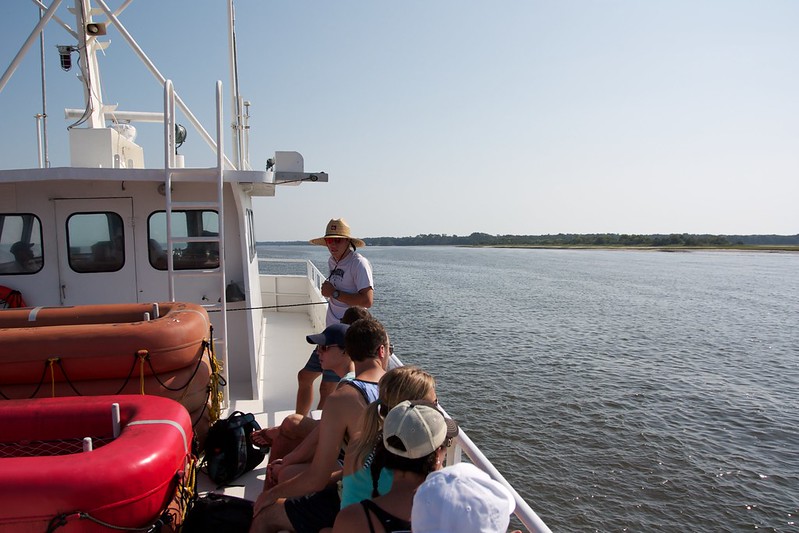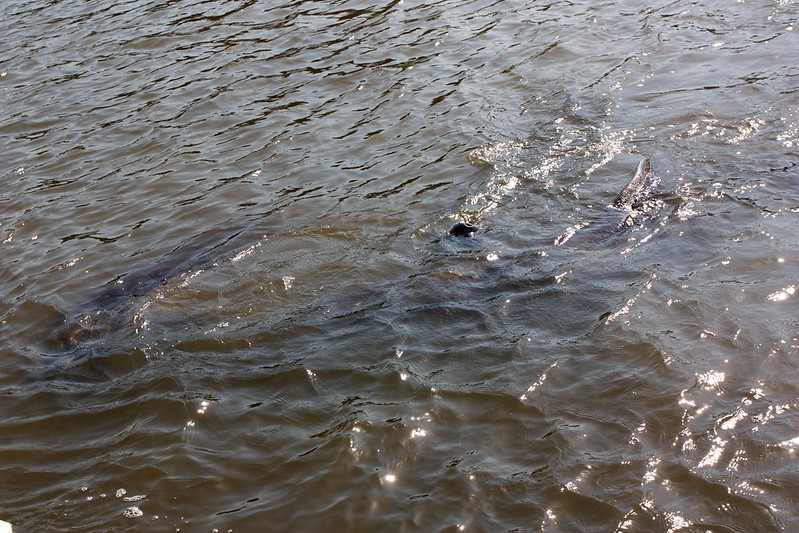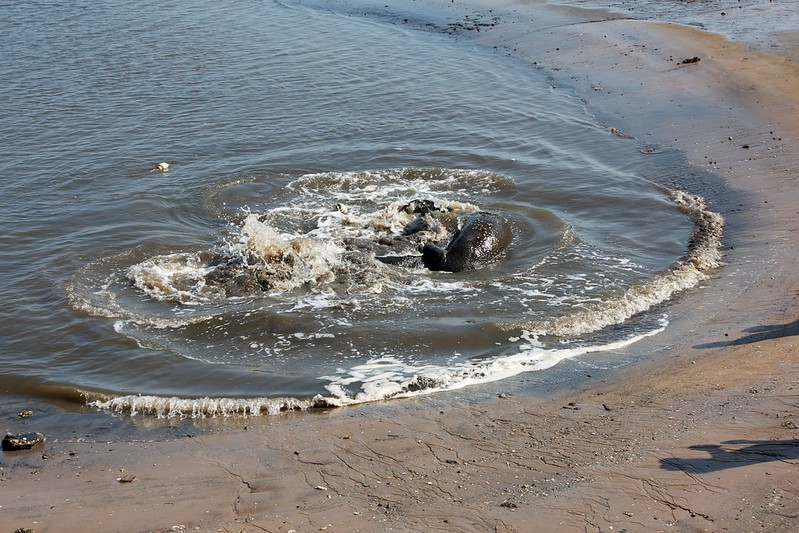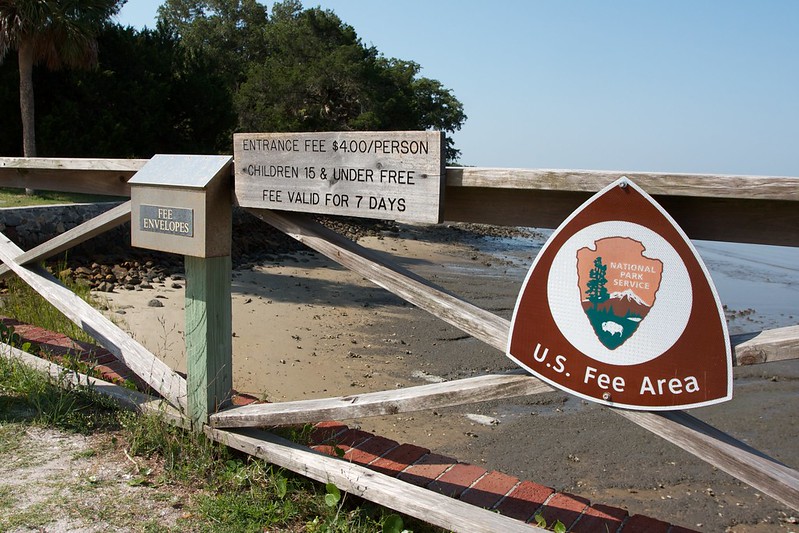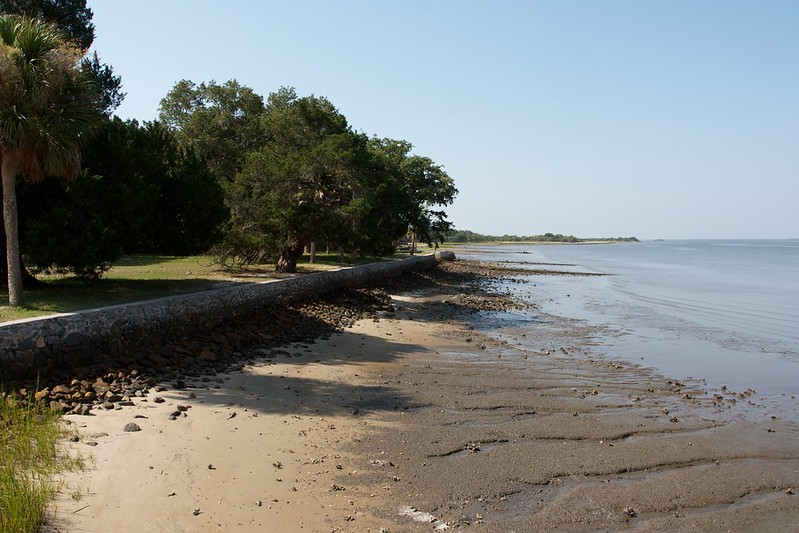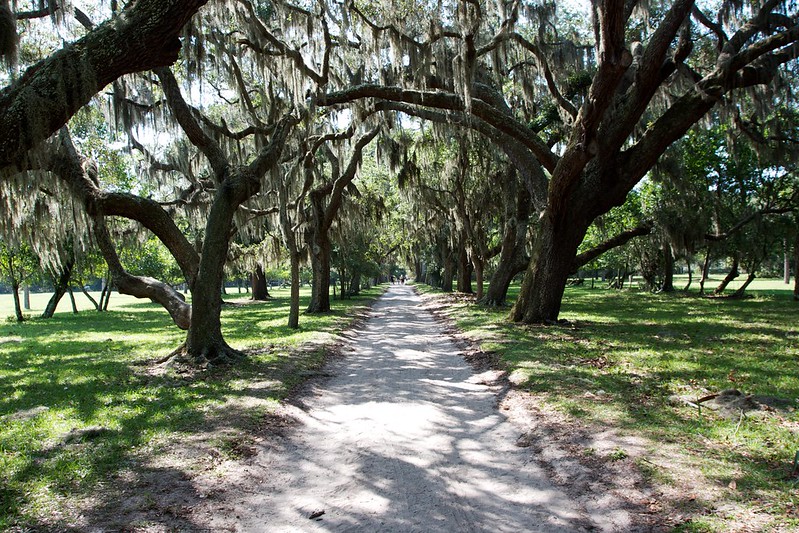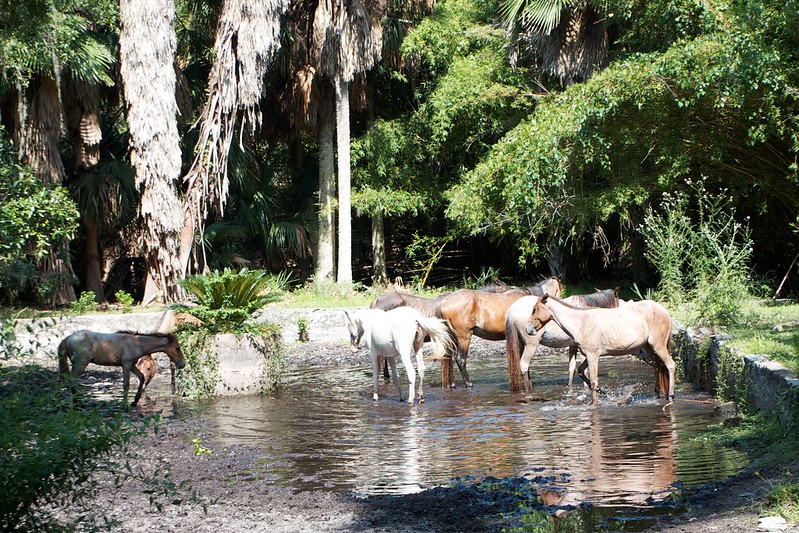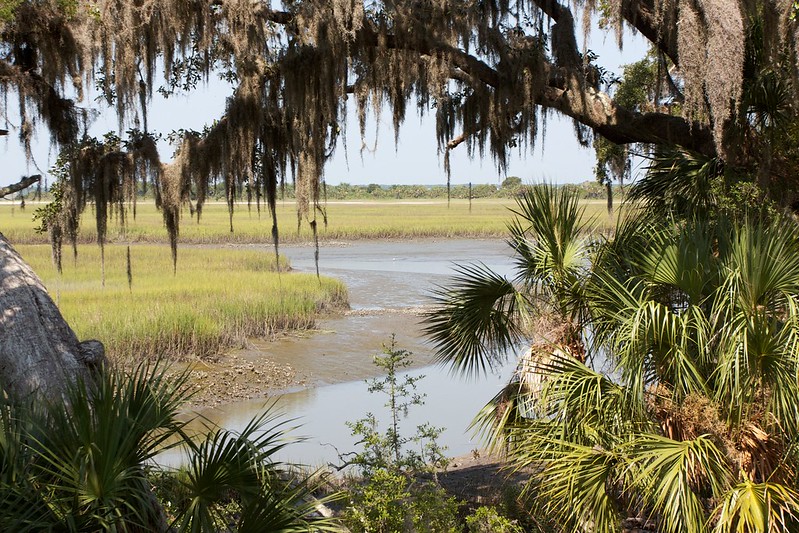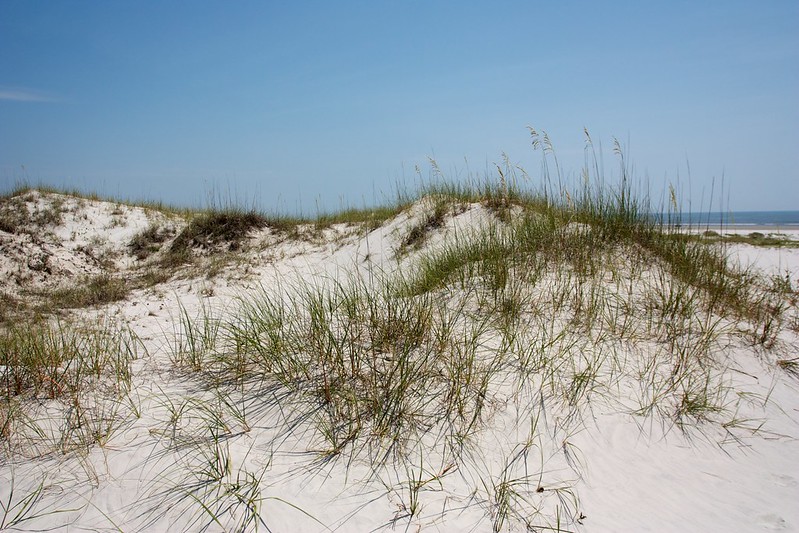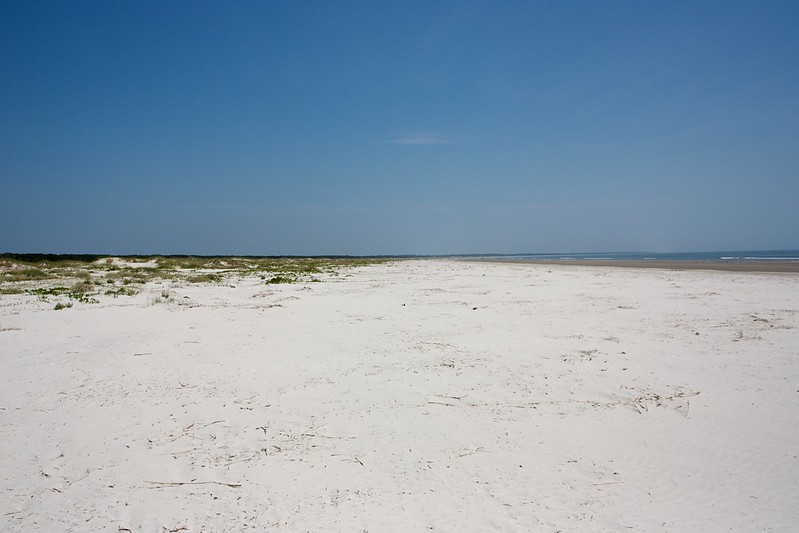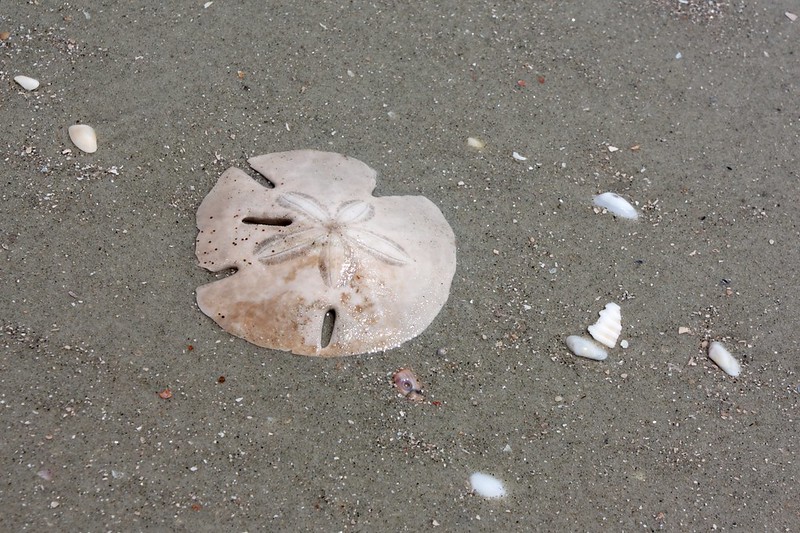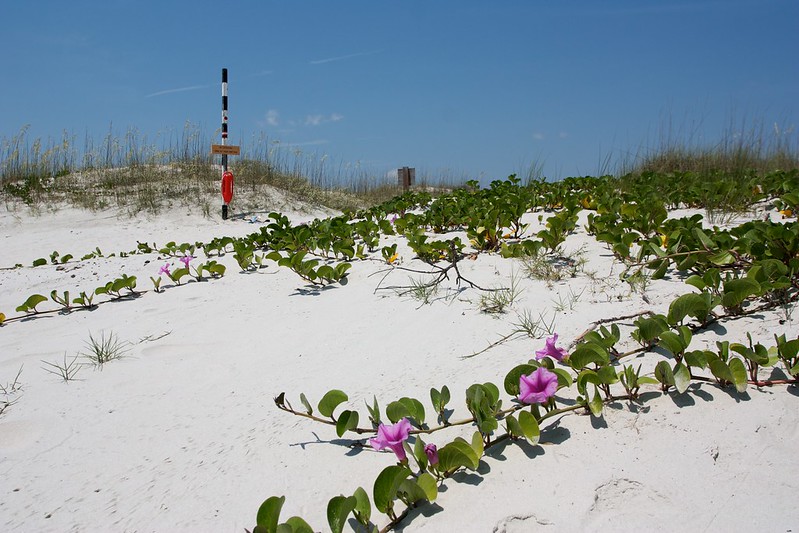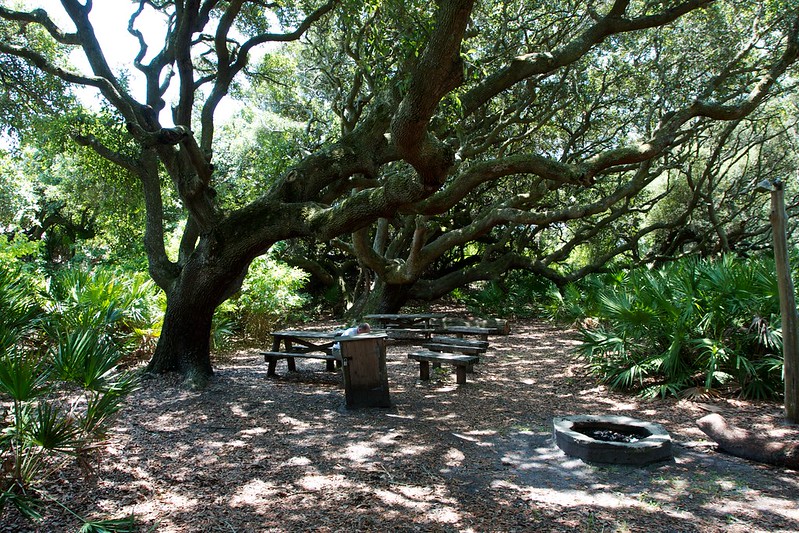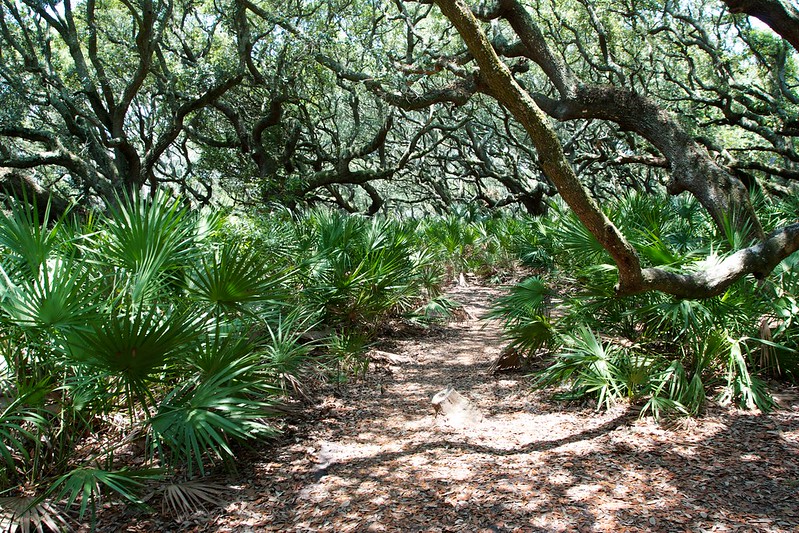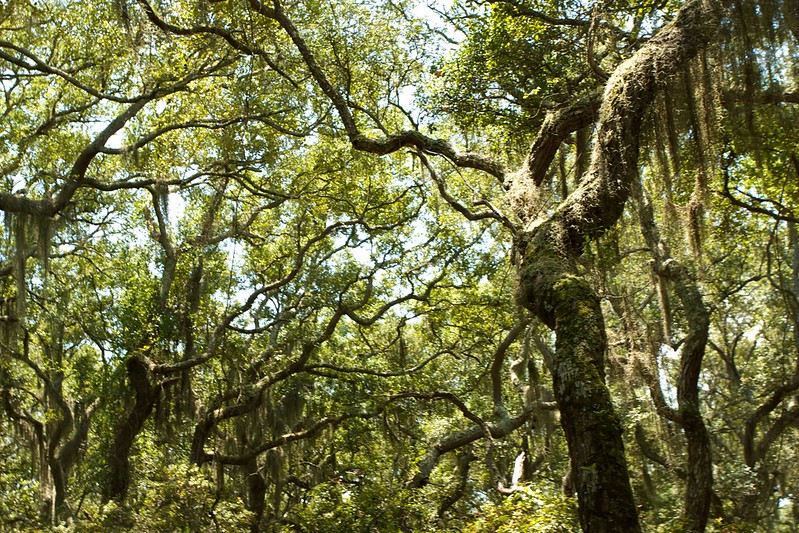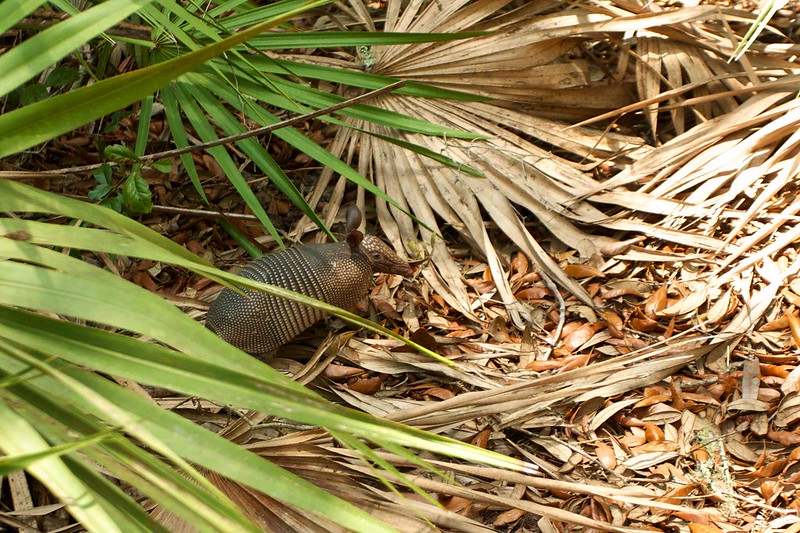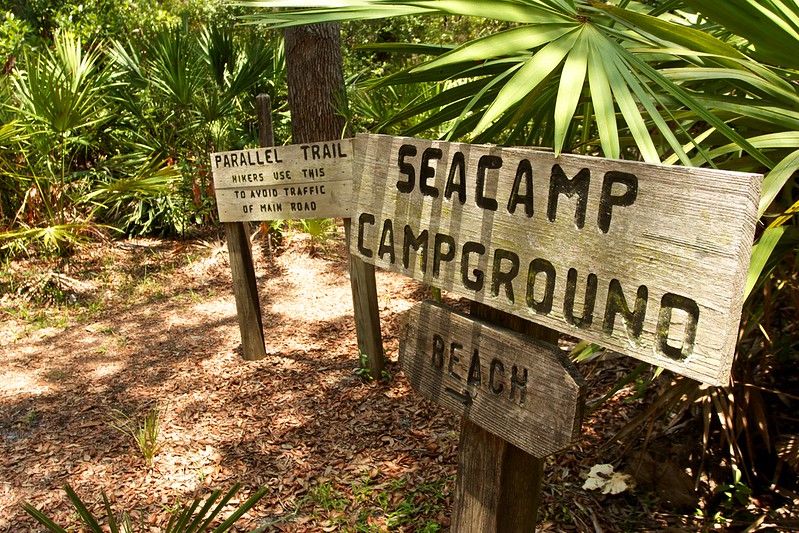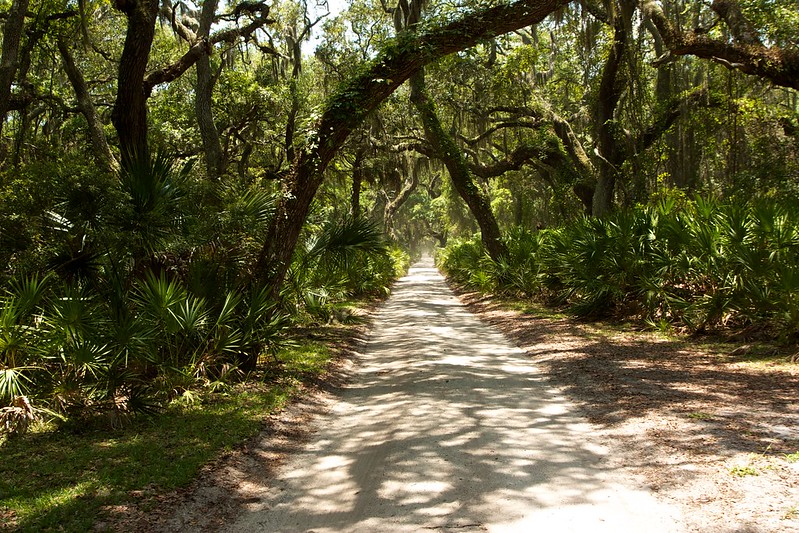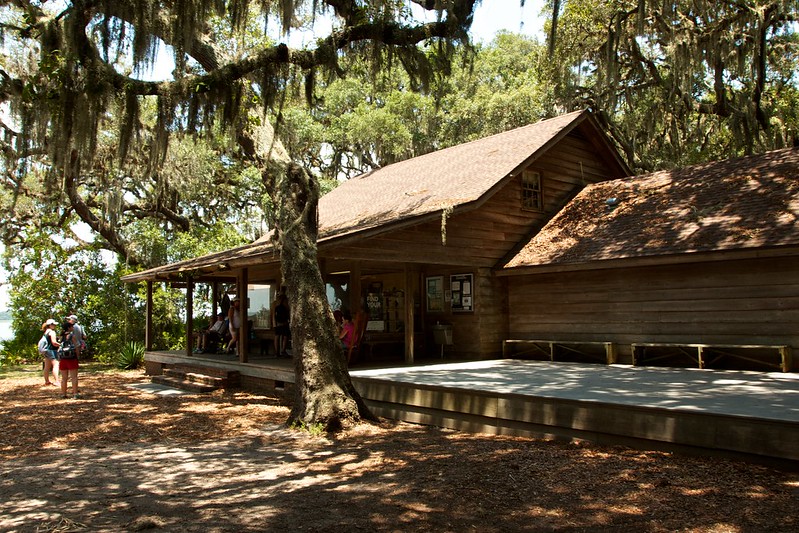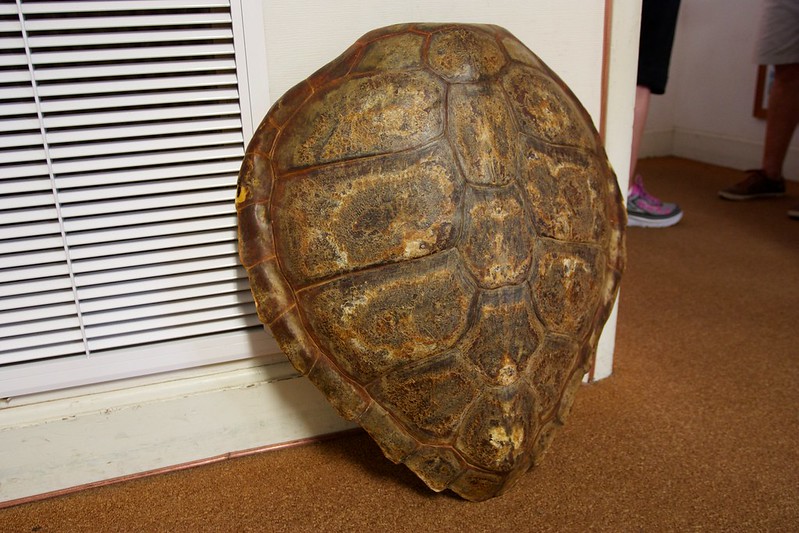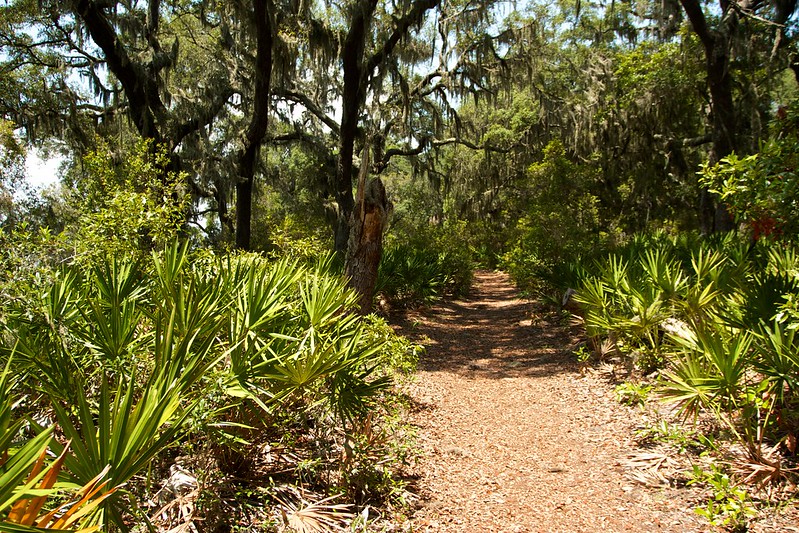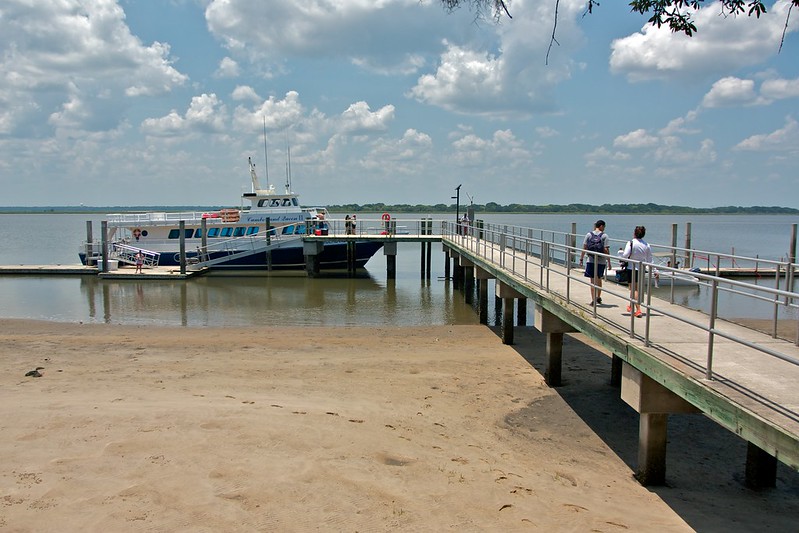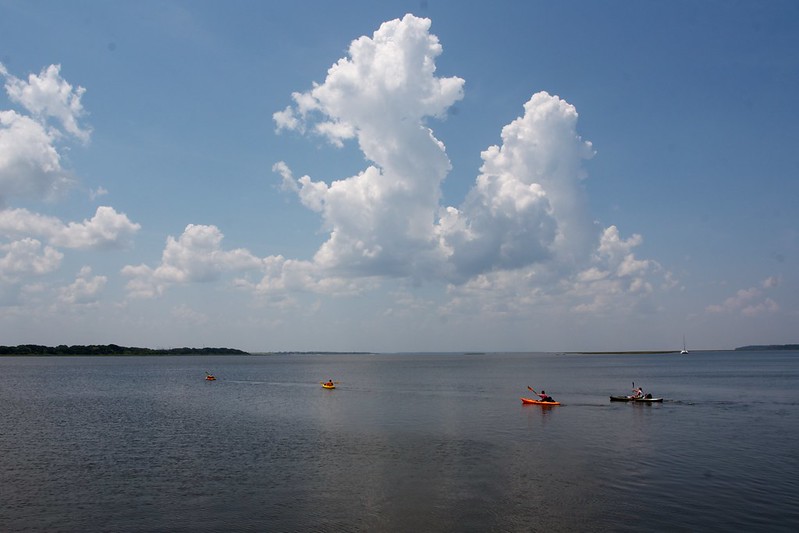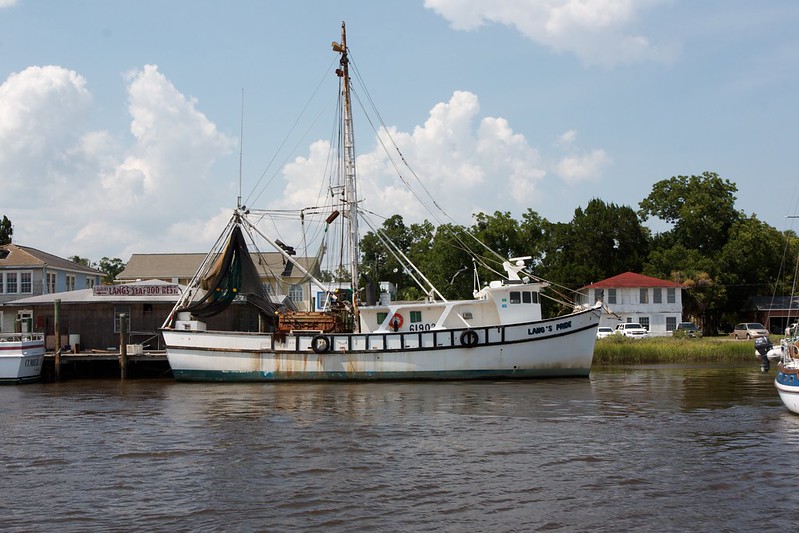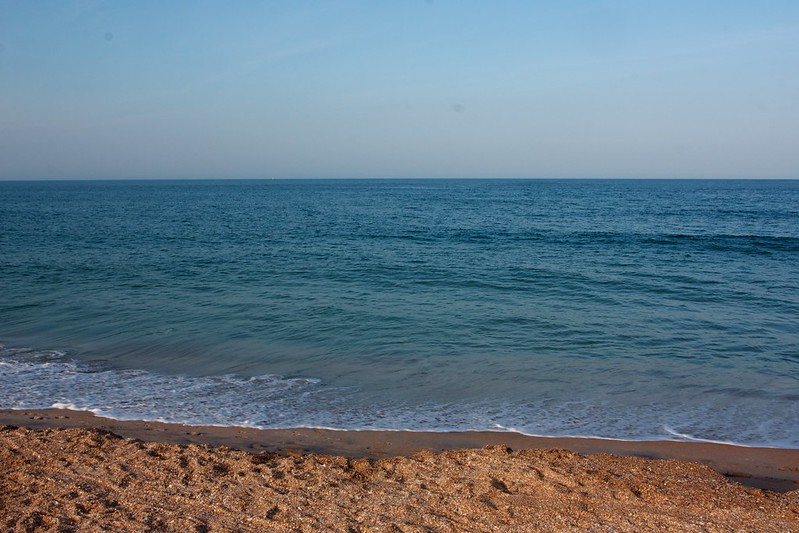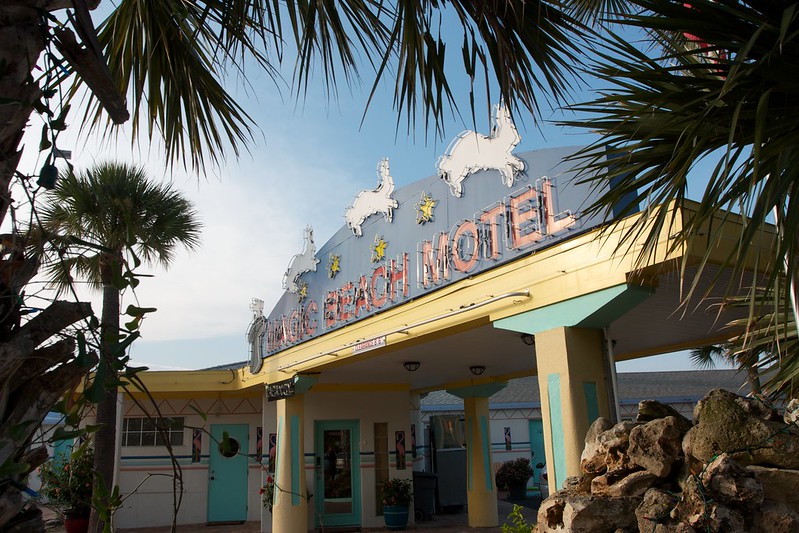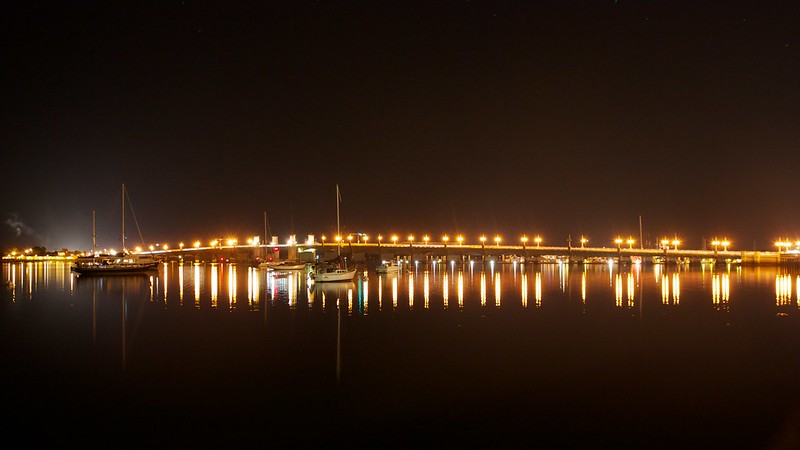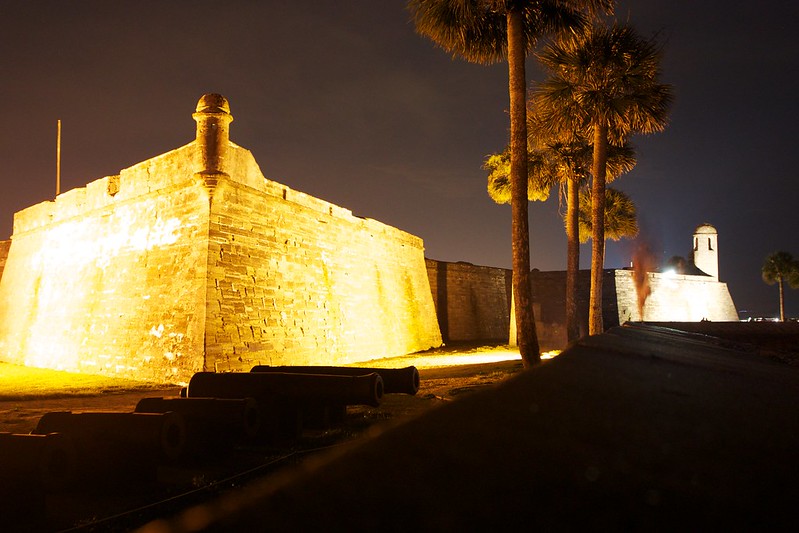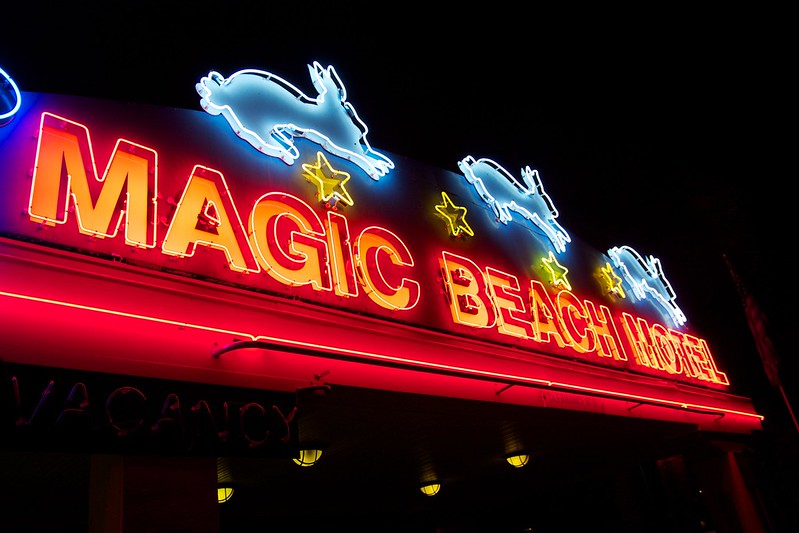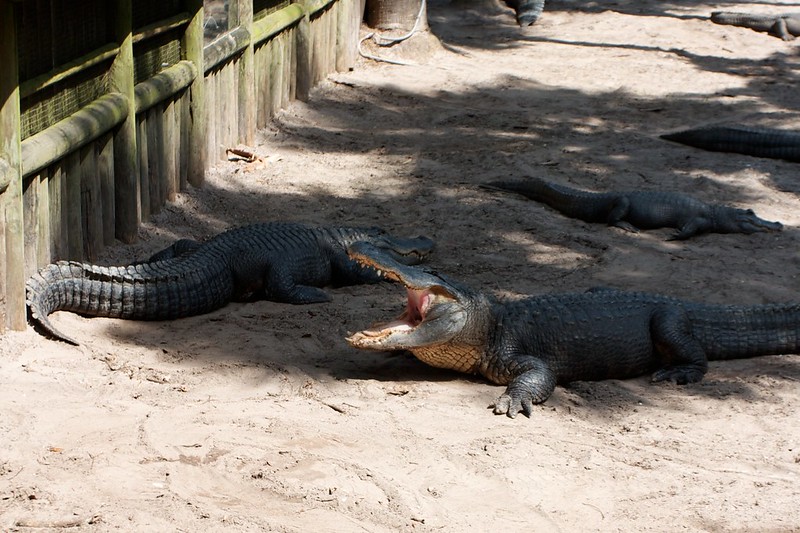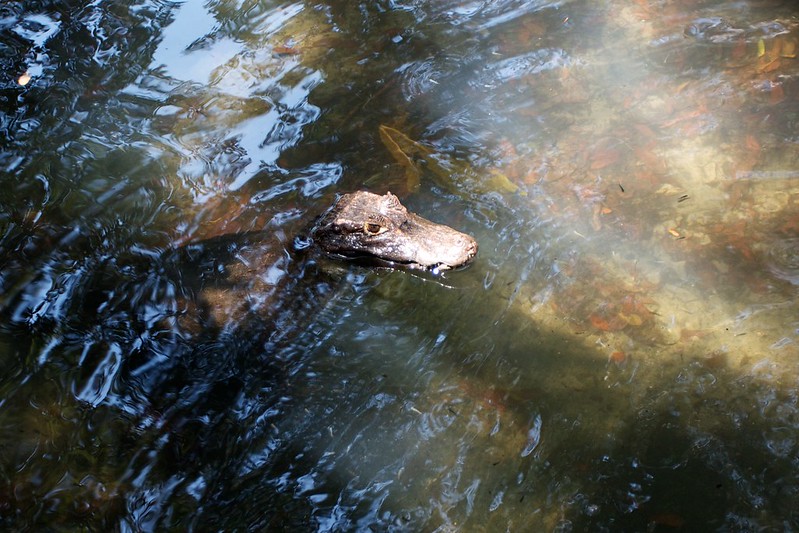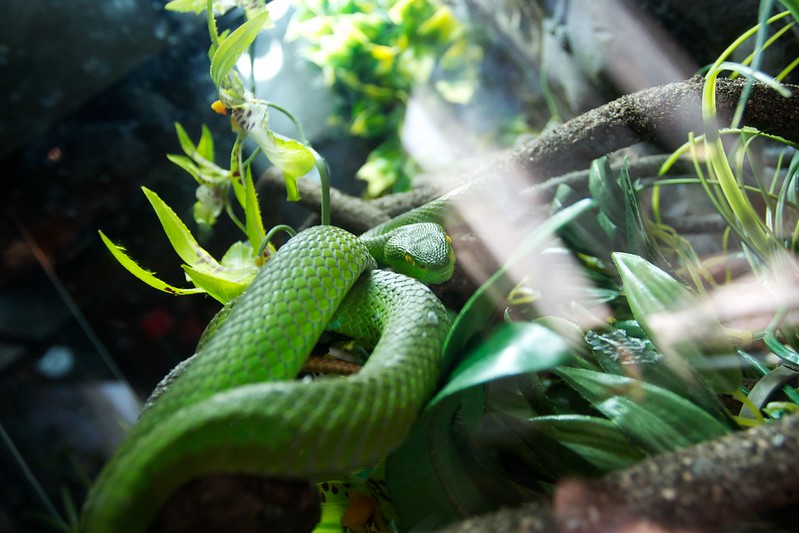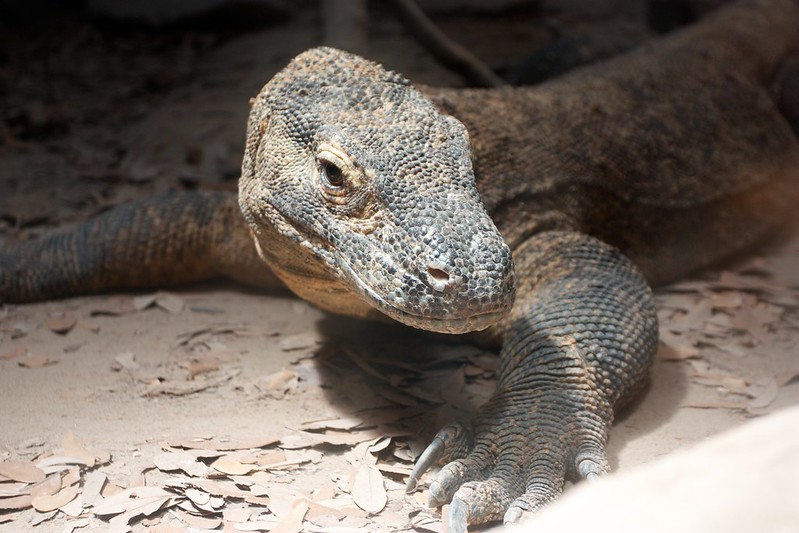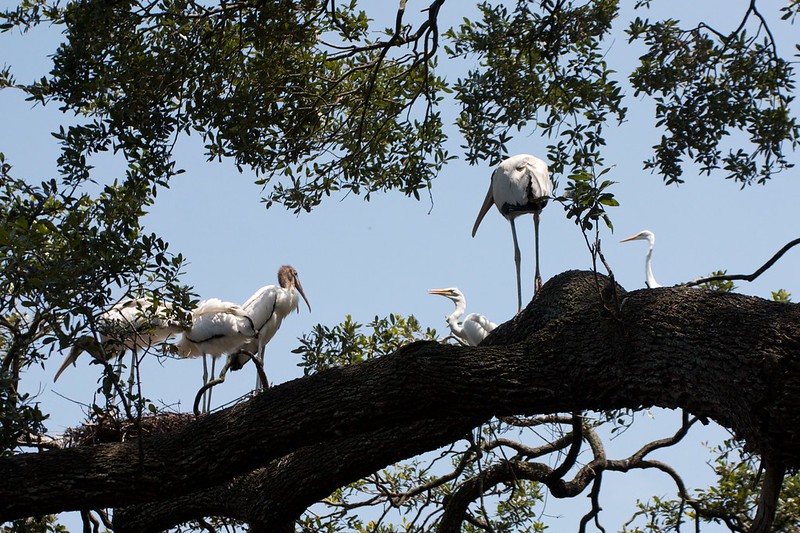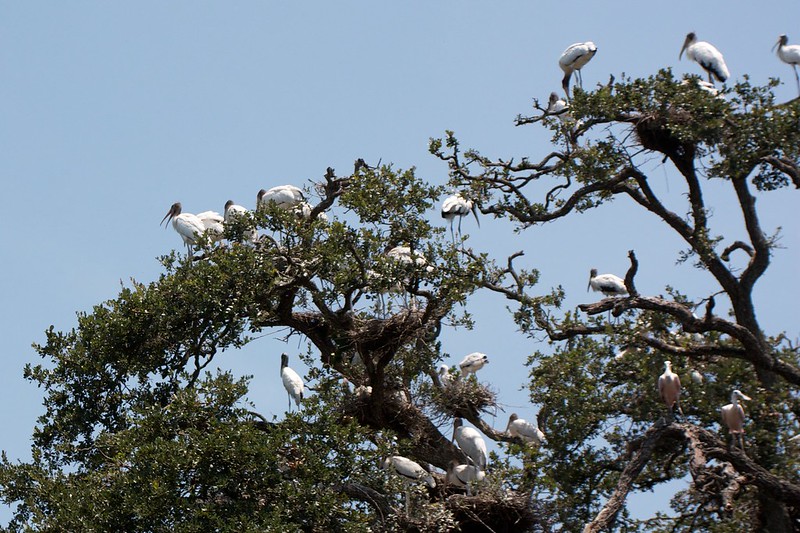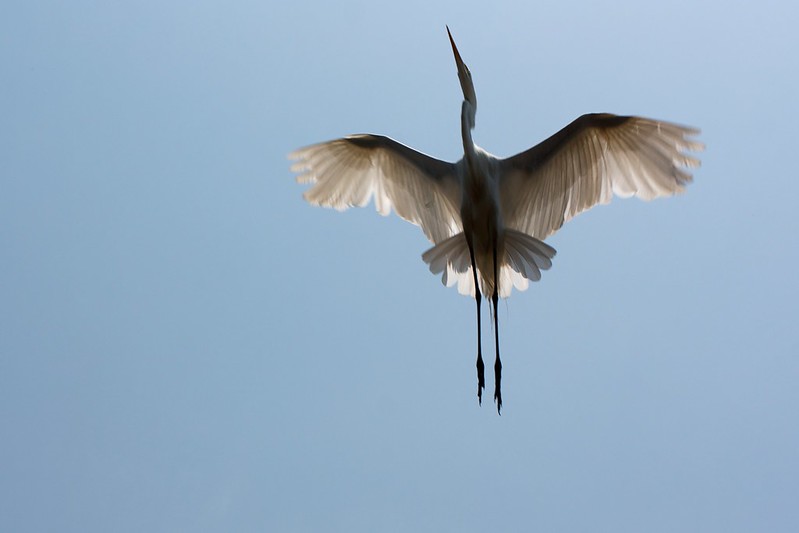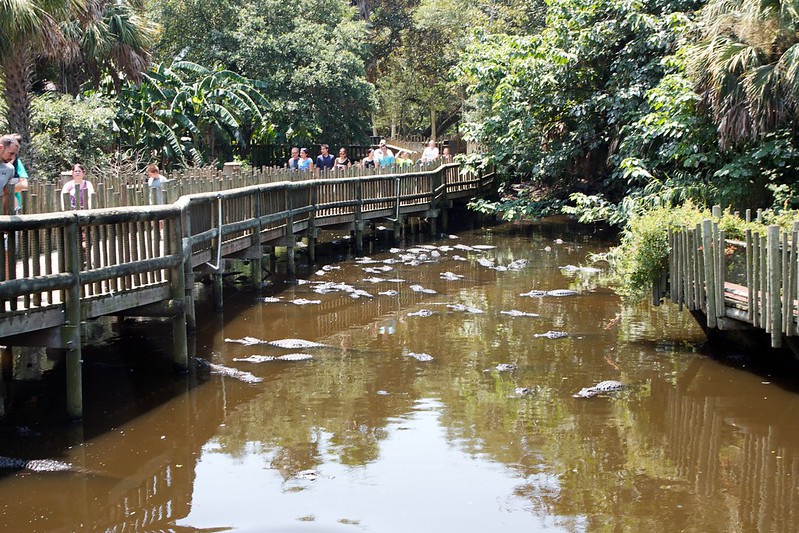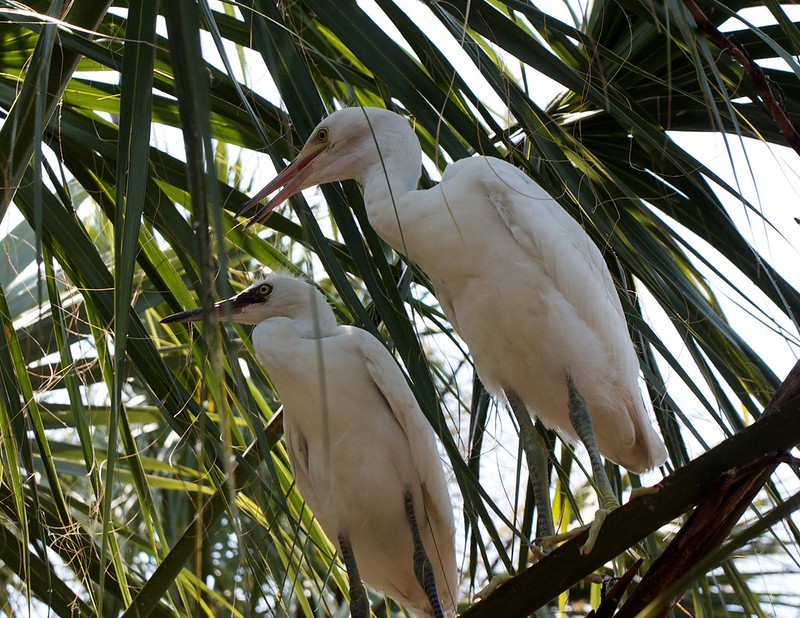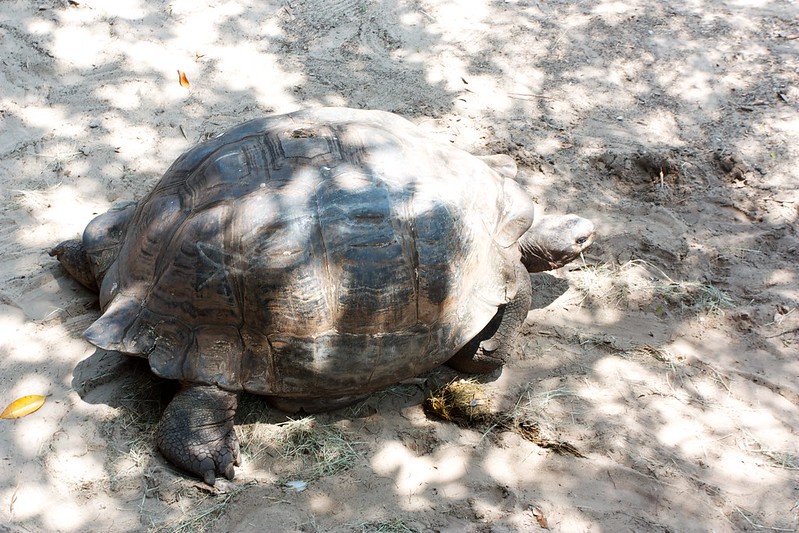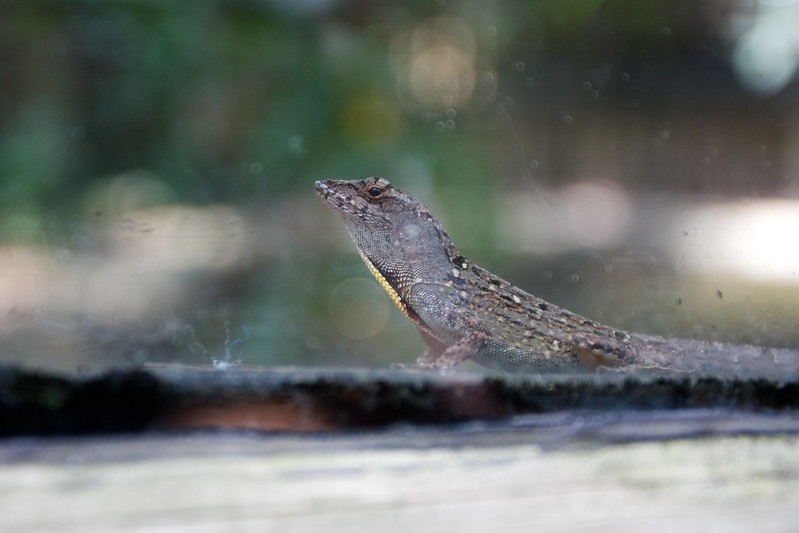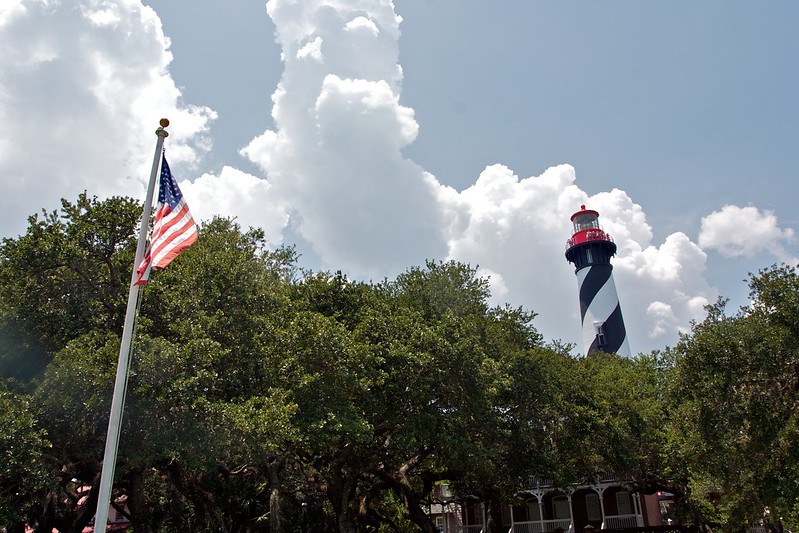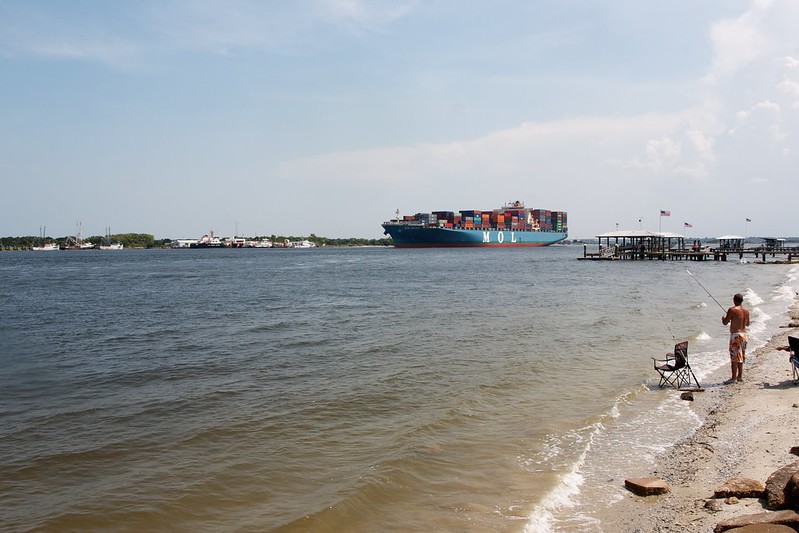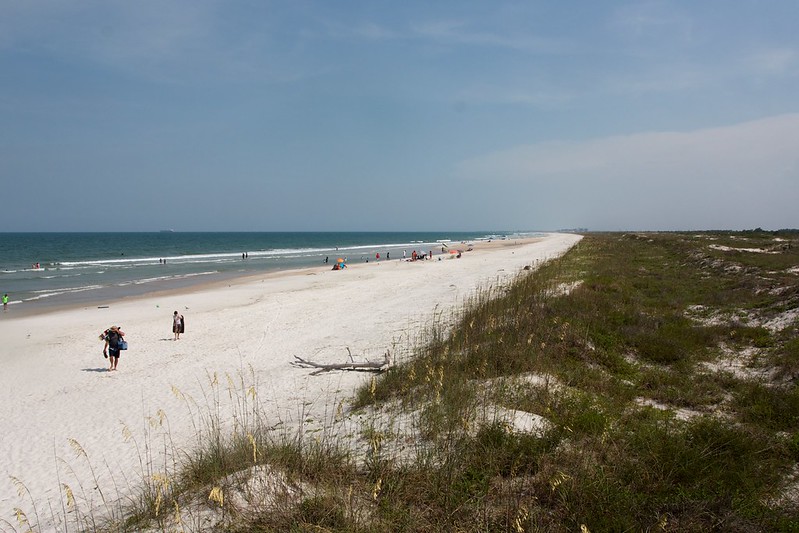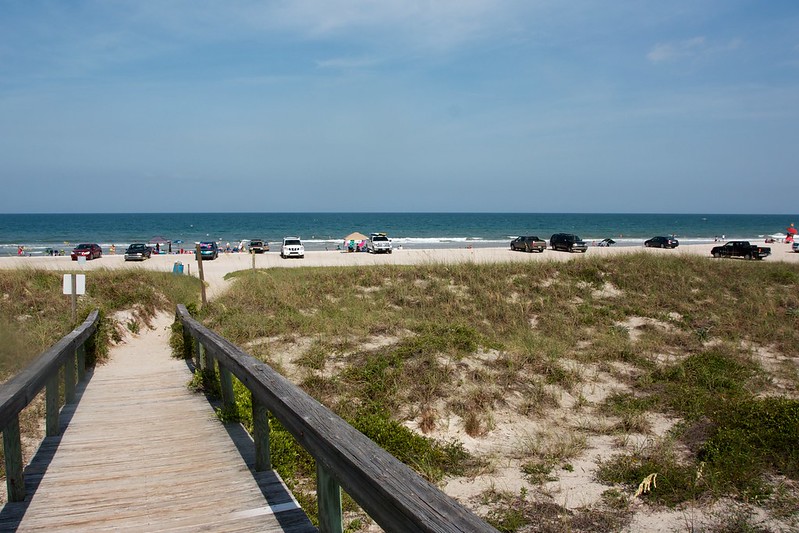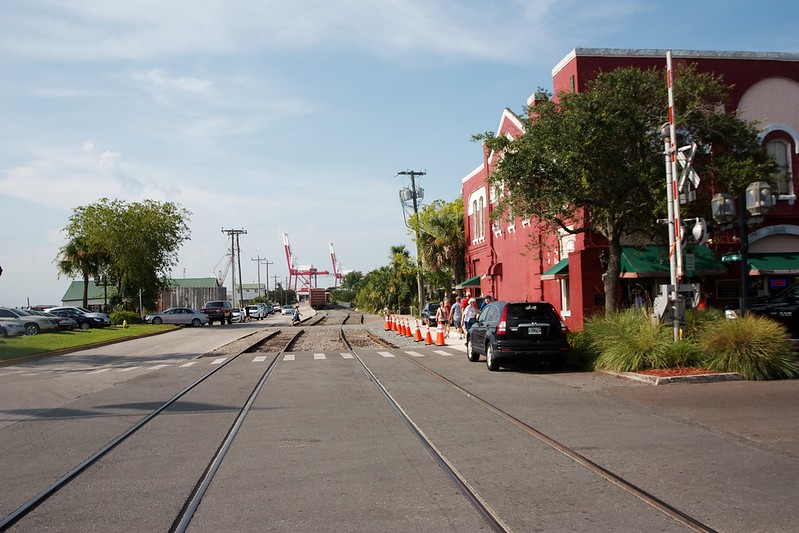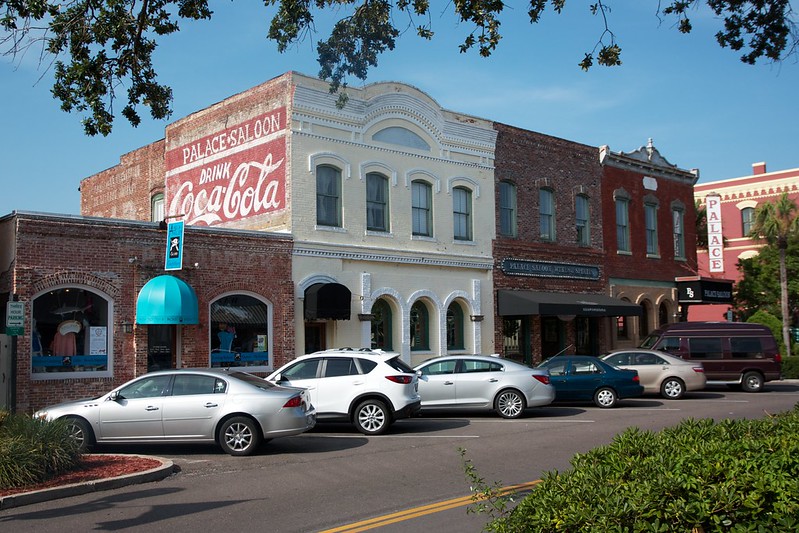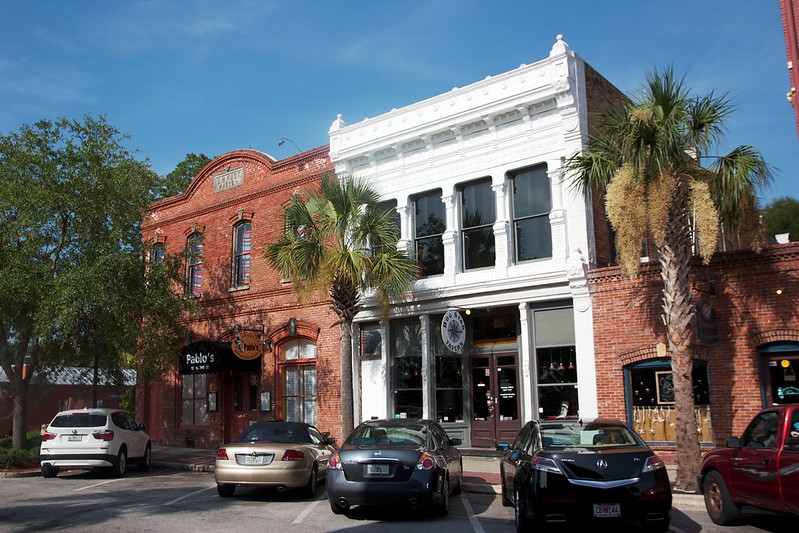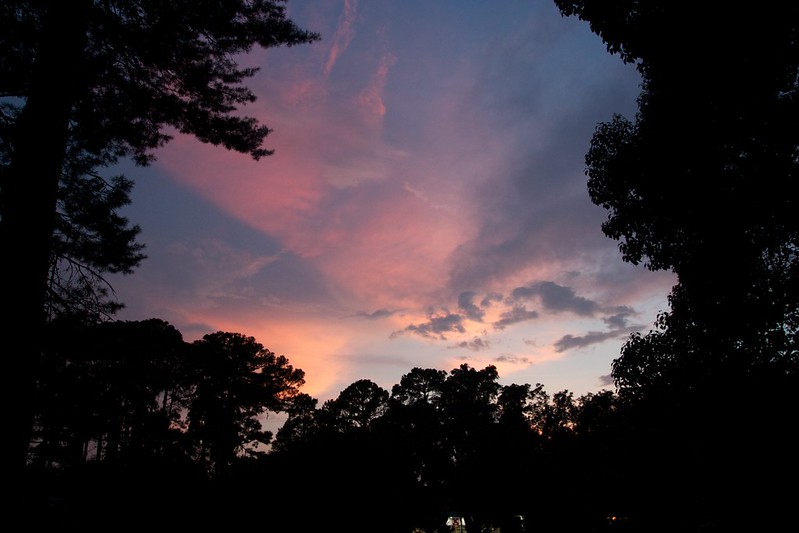Georgia (Part Four)
Day 14
It was an early start as we rolled off the island for the first time in a couple of days. The sun was rising over the marshes as we grabbed a quick breakfast from the McDonalds in Brunswick and then headed south, crossing the Sidney Lanier Bridge for the first time. Besides the river were a small flock of Roseate Spoonbills.
We drove down the fairly quiet interstate before turning off to St Marys, arriving in the town and driving down to the riverfront where the Cumberland Island National Seashore's visitor centre and ferry terminal sits. We collected our pre-booked tickets, parked the car under some shady oaks and then headed out to listen to the briefing from one of the rangers.
Then it was out onto the ferry, the Cumberland Queen II, which was moored alongside the visitor centre. We chose to head up onto the top deck as the early start meant the sun wasn’t at its most powerful just yet. With everyone aboard the ferry departed and we enjoyed a gentle cruise down the St Marys river.
The channel is wide and lazy, threading through the last of the marsh with a view across to the industry of Fernandina Beach on one side and the grey structures of the King's Bay submarine base on the other.
Eventually we were gliding along the west shore of Cumberland Island, its forest seemingly impenetrable until we neared Dungeness dock and our entry point to the island.
As soon as we stepped off the boat we saw that a crowd was forming on the dock. A maelstrom in the muddy brown waters just off the island turned out to be a group of manatees - an incredible introduction to Cumberland Island.
The crowds slowly dispersed but we stayed around, lucky enough to catch clear glimpses of them as they broke the surface twisting and turning around. It was hard to tell whether it was playful or agressive. Eventually a second adult arrived and the group almost ran aground on the beach before suddenly breaking up, the radio trackers on a couple of them showing them swimming away to the north.
With that first encounter over we could now turn our attention to Cumberland Island itself. Dungeness dock would have been the arrival point for those staying at Dungeness house and the area has a slight manicured feel to it with buildings and open pastureland divided up by long avenues of live oak and smaller areas of shrub. We stopped to have a look around the small museum in the former ice house before setting off down the live oak avenue.
In the distance we caught our first sighting of the wild spanish horses and then a group of wild turkey before following a side trail to the mostly empty duck pond where a large herd of horses were grazing and splashing about. There were a scattering of foals amongst them.
We worked our way around to the main entrance to Dungeness, now an impressively eerie ruin, even under the unblemished blue skies. It was warming up nicely now as we slowly wandered around, taking in a tabby house, the orangerie and several statues out on the lawn.
More horses appeared as we threaded our way through ruined out-buildings to the quiet cemetery sitting on the edge of the marsh.
Now it was time to head away from Dungeness and over to the wilder east coast of the island. We followed a sandy track that was broken up by occassional stretches of boardwalk. One of these took us out over the marsh where there were fiddler crabs and wading birds. We left the trees behind until it was just the coarse grasses amongst the dunes.
Here the temperatures were fierce and we were glad to finally reach the black and white dune crossing marker signalling our arrival on the beach.
The sun was beating down but there was a pleasant ocean breeze blowing in off the Atlantic where a series of shrimp boats worked their trade.
We slowly ambled up the beach, coming across sand dollars and scattering gulls that were enjoying the receding tide line.
Eventually we reached the black and white pole marking the crossing back across the dunes towards Sea Camp. Trailing vines grew across the hot white sands here and we found the heat amongst the dunes was almost overpowering.
Everyone went at their own pace, the dark line of the maritime forest an almost mirage-like vision ahead of us. Thankfully as we reached the treeline there was a shower to duck under and then we found a perfect picnic bench area under the twisted branches of live oaks where it was, if not cool, certainly much more pleasant than out under the midday sun.
Here we enjoyed an excellent picnic lunch with sandwiches and crisps and lots of ice cold water, nicely melted by the long walk down the beach. There was fresh fruit and it was pleasant to get off our feet for a little while. Above us the sun shimmered through the trees and the spanish moss and the carpet of the forest was all palmetto.
After lunch we followed signs through the maze of tracks that make up this camping area and along to the main road. The live oaks were an ever dizzying puzzle of shapes and shade and dappled sunlight arching over us.
Just before we reached the road a scuffling in the fronds gave away the presence of a tiny armadillo that was snuffling its way among the dry undergrowth.
We crossed the dusty main road and headed down the final short stretch of track to the ranger station and sea camp dock, where we would be catching the ferry back to St Mary's.
Whilst there we were lucky enough to get a short talk on sea turtles as well as holding a full sized sea turtle shell. As we waited for the ferry to depart I headed down the River Trail for a short way which enjoyed views through the edge of the trees to the languid drift of the river separating Cumberland from the marshy mainland.
Sadly our departure time swung around and our time on the magical Cumberland Island was over. We boarded the ferry, this time seeking some shade on the lower deck and enjoyed our ride back.
As Cumberland receded behind there was still a wildlife treat in store as a dolphin's fin appeared in the water before the boat. Then the trees around St Mary's appeared and we were following the wide channel of the river back up to the town.
After retrieving the car we had a short drive around St Mary's, seeing the house where Leslie's Dad grew up and some of the sights, old and new, around the town.
Then it was time to tackle the drive down to Saint Augustine in Florida, our destination for the evening. The roads around Jacksonville were busy and the weather threatened us with storms as we crossed the St John river. Soon though we down the interstate and then turning off for Saint Augustine. Our motel was located in Vilano Beach, across the water from the city itself and everyone was glad to reach it and get a shower after the long, hot, dusty but amazing day on Cumberland.
The Magic Beach Motel had a lot of Americana charm about it and the beach was just a two minute walk away. Unlike further north the Atlantic here is clear and blue with an unbroken horizon. We enjoyed a stroll here as the day progressed and the heat started to diminish a little.
After getting smartened up we headed into Saint Augustine itself, eventually finding a parking spot near the restaurant we were booked into. We walked down St George Street, the main street which is quaint and touristy in a way I didn't expect a place to be like in the USA.
After taking a look at the oldest wooden school house still standing in the US, and the gates of the city, we got a delicious flavoured popsicle from Hyppo and then headed along to the Columbia restaurant where we had an absolutely delicious Caribbean-food inspired dinner accompanied by Sangria de Cava. My Shrimp Criollo in particular was wonderful.
With stomachs happy and darkness now fallen over the city we took a stroll along the waterfront and along to the Spanish-era fortress, the Castillo de San Marcos. The lights on the Bridge of Lions reflected off the harbour waters and there was a pleasant atmosphere as the placed geared up for night time.
Back across in Vilano Beach the neon of the Magic Beach Motel drew us like a moth to a candle and we were soon tucked up in bed after a long but brilliant day.
Day 15
The next morning after a fun little breakfast in the motel we headed through St Augustine and across the Bridge of Lions to the Alligator Farm. As well as alligators this quite large park is home to a vast array of animals from across the globe and we spent a very enjoyable morning wandering around its leafy paths.
The central attraction of course is the alligators and we arrived just in time to see one of the feeding shows where a keeper demonstrated their terrifyingly fast reflexes for catching passing prey. The raised boardwalks gave you plenty of opportunity to see these powerful, prehistoric creatures from a close but comfortable distance.
In a nearby shaded pool a group of juvenile crocodiles were only too eager to fight over food pellets tossed to them.
There were also plenty of other reptile species including snakes in the humid dark of the python cave and a massive komodo dragon.
The most interesting part of the park for me was the [outdoor rookery]http://www.alligatorfarm.com/wading-bird/). We reeached this after seeing the park's largest animals, the deceased Gomek and the huge Maximo, an Australian saltwater crocodile.
The rookery is home to dozens if not hundreds of wading birds that make their nests in the trees above the outdoor alligator swamp. This is traversed on a long winding boardwalk with the alligators almost forgotten as we got close to Roseate Spoonbills, Wood Stalks and ridiculously fluffy baby egrets still wobbling about their nest.
There was a constant coming and going of birds, squabbles and squawks, chicks being fed and adults bickering. The sight of these huge creatures gliding just above us was magical and we spent a long time out despite the growing heat of the day.
After the rookery and alligator swamp there were a few more animals to take a look at including a giant tortoise, lemurs, a pelican, a wide variety of lizards and yet more species of alligators and crocodiles. Eventually though we had seen all we wanted to see and were ready to move on and find some lunch.
Whilst over on this side of the city we took a brief trip out to the Saint Augustine lighthouse before heading back out of town to Schooner's Seafood House that proved to be very popular with the Sunday church crowd. Eventually the slightly flustered waitress got us seats at the bar and we tucked into some excellent fried shrimp and iced tea.
After lunch we had a brief thought about tackling some of the touristy spots in downtown Saint Augustine but eventually decided to tackle the dive home, planning on taking the longer but more attractive coastal route. So, heading north, after crossing the John River we left the interstate and instead followed the old coastal highway (designated A1A) as it wound its way along the shore of the Atlantic, passing white-sand beaches and stretched-out beachside towns.
We stopped at Little Talbot Island state park where the heat on the dunes was quite incredible and towering clouds to the west told of the storm that would hit us a few hours later.
Nearing Fernandina Beach we stopped at Peters Point for another stroll along the beach before continuing on into town.
In Fernandina Beach itself we parked up by the marina and had a drink in Brett's Waterway Cafe before taking a stroll down main street. The place has a very Spanish-colonial with palms and red-bricked buildings, including the Palace Saloon, the oldest bar in the state of Florida.
Then it was a long drive back north into Georgia. On the way we encountered a massive thunderstorm that had us slowing to a crawl on the interstate. We found Brunswick shimmering as the evening light bounced off soaking streets.
A very filling dinner was had at the Olive Garden before we returned across the causeway to St Simons. It was very nice after a long day in the car to put the feet up and kick back with a cold beer from the fridge as the storm clouds parted and a pastel sunset lingered in the west.
